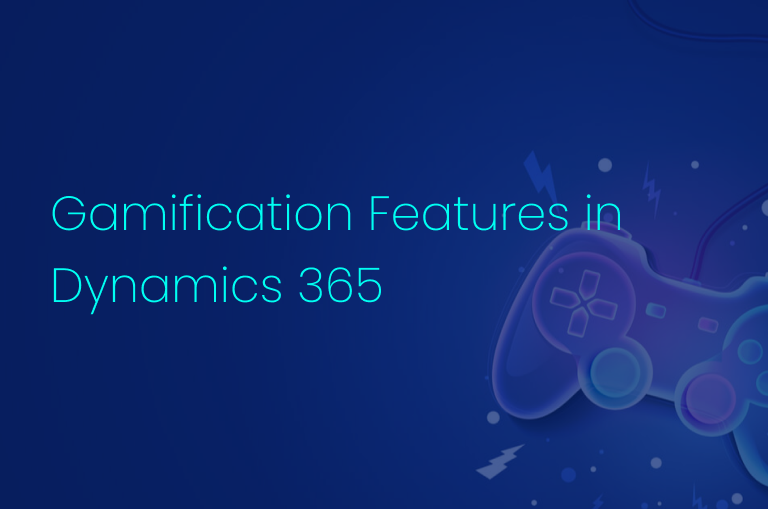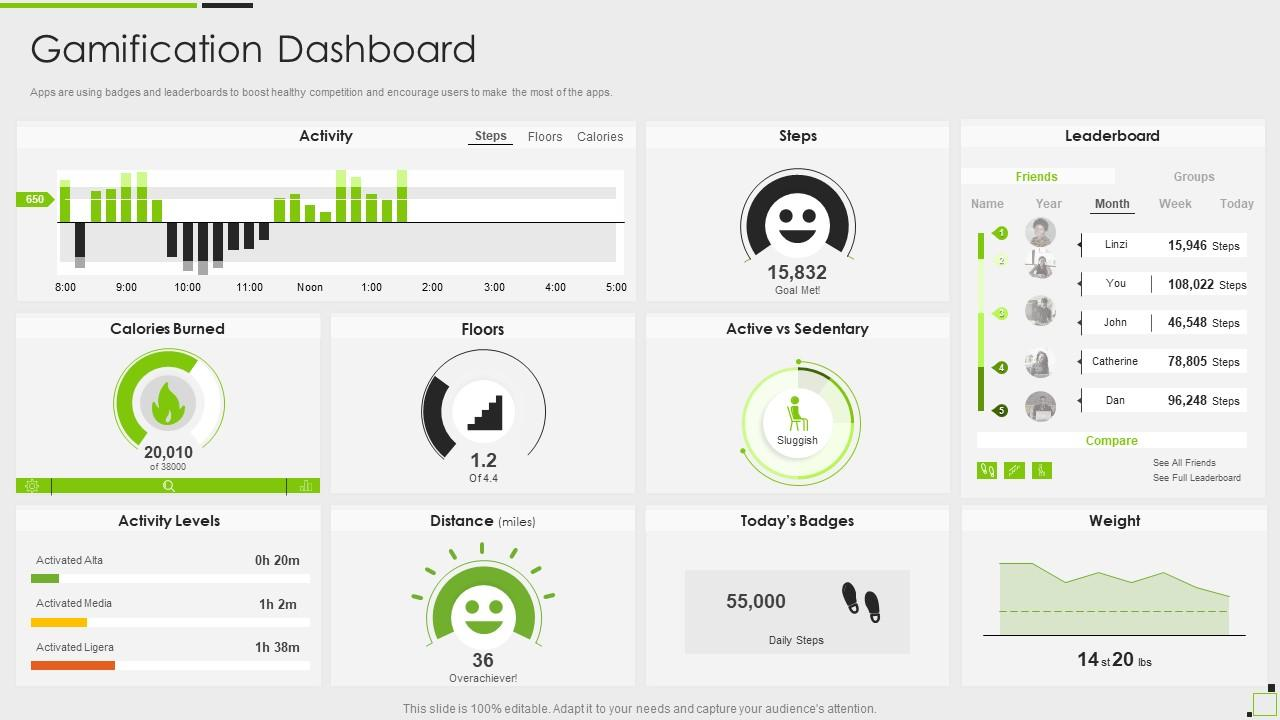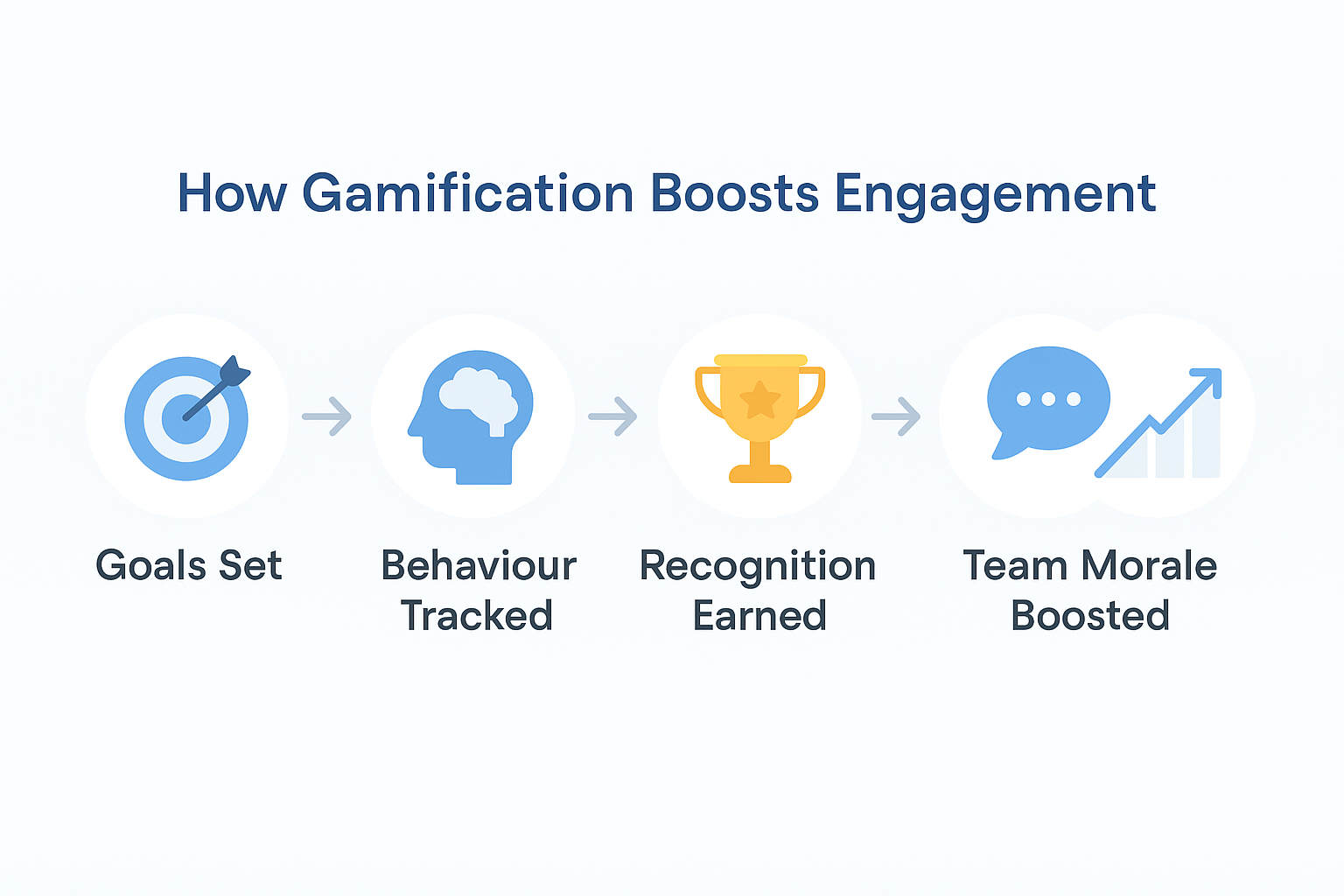Gamification Features in Dynamics 365: Boosting Sales Team Engagement

Sales is competitive by nature. Hitting targets, outperforming peers and closing deals faster has always been part of the job. But when day-to-day tasks become repetitive, even the most motivated sales reps can lose momentum. That is where gamification comes in.
Microsoft Dynamics 365 offers built-in gamification tools designed to keep your sales team focused, productive and engaged. By transforming sales activities into friendly competitions with real-time leaderboards, badges, and rewards, gamification can significantly enhance performance and morale across your team.
Here is how gamification works in Dynamics 365 and why it can be a game-changer for your organisation.
What Is Gamification in CRM?
Gamification involves incorporating game-like elements into non-game environments. In CRM systems like Dynamics 365, this means utilising point systems, challenges, and visual dashboards to motivate users to complete tasks and achieve goals.
Instead of relying solely on traditional KPIs or end-of-quarter reviews, gamification creates a more dynamic, real-time feedback loop. It gives reps immediate recognition for their progress and fosters healthy competition.
Gamification Features in Dynamics 365
Dynamics 365 provides a suite of native gamification tools that integrate seamlessly with your sales data. These features are configurable, easy to launch and scalable across sales teams of any size.
1. Performance Leaderboards
Sales managers can create leaderboards that rank team members based on performance metrics like:
-
Number of leads generated
-
Opportunities won
-
Revenue closed
-
Customer calls or emails logged
Leaderboards are updated in real time and are visible to the team. This visibility sparks competition and helps everyone see where they stand. You can even display the leaderboards on screens in your office or in Microsoft Teams.
2. Custom KPIs and Challenges
Dynamics enables you to create custom key performance indicators tailored to your business. You can reward not only closed deals but also early-stage behaviours like lead qualification or pipeline creation.
For example:
-
Log 15 calls this week
-
Create 5 new opportunities
-
Follow up with every quote within 24 hours
Short-term challenges are especially effective for driving activity during slow periods or encouraging the adoption of new features.
3. Badges and Recognition
Reps can earn badges for achievements such as:
-
“Top Closer” for most deals in a month
-
“Fast Follower” for the quickest follow-ups
-
“Pipeline Builder” for generating new opportunities
Badges are visible to the whole team. This promotes recognition and reinforces positive habits without waiting for formal reviews.
4. Rewards and Incentives
Gamification supports virtual or real-world rewards. Managers can link achievements to tangible perks like:
-
Gift cards
-
Team lunches
-
Early finishes on Fridays
-
Priority on new leads
By tying effort directly to incentives, managers can shape behaviours aligned with sales goals.
5. Fantasy Teams
One of the more creative features in Dynamics is the fantasy team model. Just like fantasy sports, sales reps can form teams and compete collectively. This promotes collaboration rather than only individual competition.
Fantasy teams are ideal for cross-regional or cross-departmental engagement, especially in large or remote sales teams.

Why Gamification Works for Sales Teams
It makes goals visible.
Instead of waiting until the end of the month, reps can see progress in real time. This creates a sense of urgency and purpose.
It encourages consistent behaviour.
Gamification rewards small, repeatable actions, such as logging calls or updating the pipeline, that are crucial to long-term success.
It builds healthy competition.
Leaderboards and challenges foster accountability. High performers are celebrated, and others are encouraged to push harder.
It improves morale.
Sales can be stressful. Gamification adds fun and variety, making work more enjoyable.
It drives adoption of new features.
If you are launching new CRM processes or AI tools, gamification can speed up adoption by encouraging usage through challenges and recognition.

Best Practices for Implementing Gamification
Start with clear goals.
Decide what behaviours or results you want to promote. Then choose KPIs and challenges that align.
Keep it simple.
Too many rules or rewards can be confusing. Focus on 3 to 5 metrics that matter most to your team.
Update regularly.
Change up challenges on a weekly or monthly basis to keep interest high. Rotate reward types and badge categories.
Celebrate publicly.
Use Microsoft Teams, company newsletters or in-office screens to announce winners and share progress.
Balance competition with collaboration.
Utilise team-based challenges to foster knowledge sharing and camaraderie alongside individual performance.
Real-World Impact of Gamification
Companies that adopt gamification in CRM often report improvements such as:
-
Increased CRM usage by up to 40%
-
Faster lead response times
-
More accurate pipeline reporting
-
Higher sales rep satisfaction and retention
For example, a mid-sized manufacturing firm using Dynamics 365 saw a 25% increase in quote follow-ups after introducing a monthly leaderboard and offering gift cards as incentives. The sales manager noted that the visibility of rankings alone encouraged friendly competition that improved team energy.
Final Thought
Gamification in Dynamics 365 is not about gimmicks. It is a strategic tool that brings focus, motivation and accountability to your sales team. When implemented thoughtfully, it transforms the CRM experience from a reporting task into an engaging part of each workday.
At ARP Ideas, we help clients design and launch gamification programmes that are aligned with their sales strategy and culture. Whether you are just starting with Dynamics 365 or looking to optimise your setup, we can guide you in building a system that your team actually enjoys using.
Let us show you how Dynamics gamification can turn goals into games and performance into progress.
